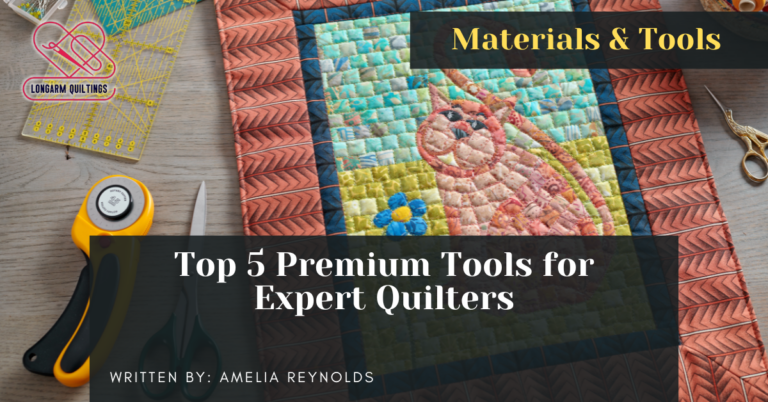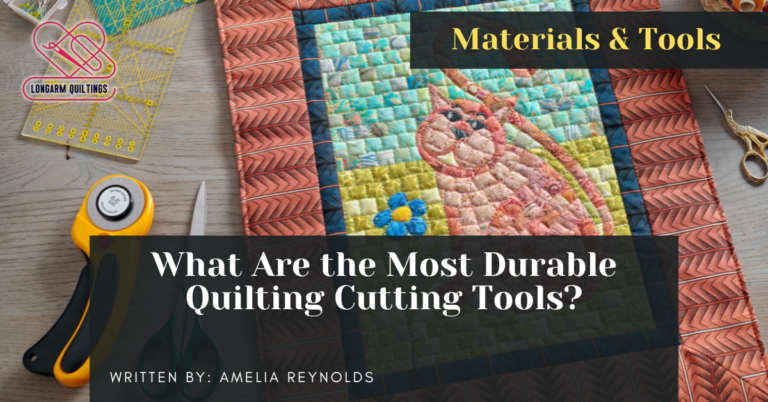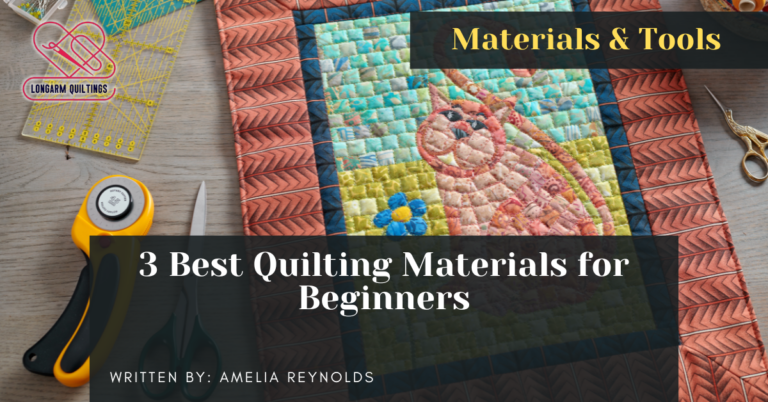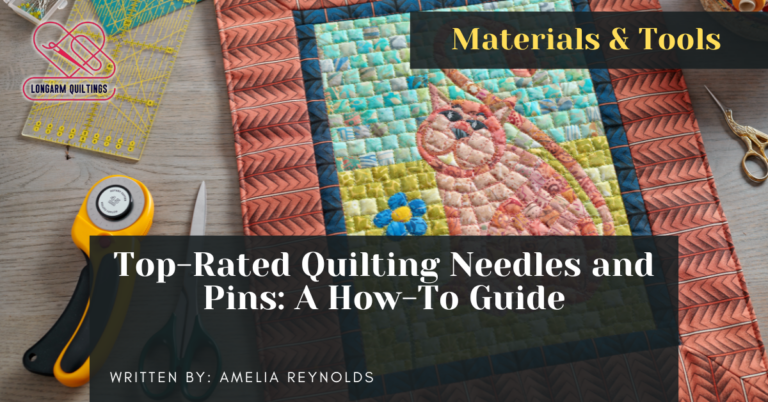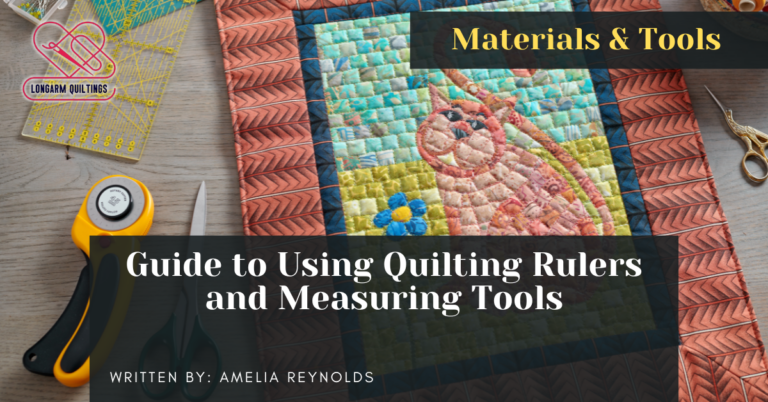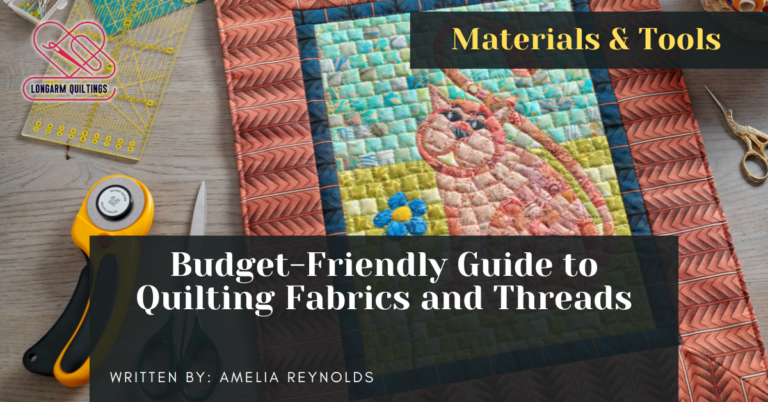Embarking on a quilting project demands precision and high-quality materials to ensure a successful outcome. From meticulously selecting the right fabric to choosing the finest thread, each decision plays a vital role in the final product's durability and aesthetic appeal.
However, beyond the basics lie seven key materials that can elevate your quilting game to a whole new level. These materials are not only essential but can also make a significant difference in the ease of your quilting process and the professional finish of your project.
Fabric Selection
When choosing fabric for your quilting project, consider the texture and weight to ensure the desired drape and overall look of the finished piece. Color coordination and pattern selection are essential aspects to keep in mind to achieve a cohesive and visually appealing quilt. Select fabrics that complement each other and create a harmonious overall design.
Fabric texture plays a significant role in the final appearance of the quilt. Smooth fabrics like cotton provide a clean and crisp look, whereas textured fabrics like linen can add depth and interest to the piece. Additionally, consider the durability of the material to ensure that your quilt will withstand wear and washing over time.
It is important to choose fabrics that not only look beautiful but also feel good to the touch. Experiment with different fabric combinations to create visual interest and a unique aesthetic for your quilting project. Remember that the fabric you select will ultimately determine the overall quality and longevity of your finished piece.
Thread Choices
Considering the impact of thread choices on the final appearance and durability of your quilting project is imperative for achieving a professional and polished result. When selecting threads for your quilting project, key factors to consider are color coordination, stitch quality, thread weight, and tension control.
Color coordination plays a crucial role in enhancing the overall aesthetic of your quilt. Choosing threads that complement the fabric colors can create a harmonious look, while contrasting colors can add visual interest and dimension. Additionally, selecting high-quality threads is essential for achieving excellent stitch quality. Threads that are smooth, strong, and consistent will result in neat and precise stitching.
Moreover, understanding thread weight is vital as it can impact the overall look and feel of your quilt. Thicker threads can add texture and definition to your quilting design, while thinner threads are ideal for intricate detailing.
Lastly, mastering tension control when working with different thread weights is essential for preventing thread breakage and ensuring even stitching throughout your quilt.
Batting Options
Selecting the appropriate batting for your quilting project is a critical decision that significantly influences the overall look, feel, and functionality of the finished quilt. When considering polyester vs cotton batting, polyester is known for its durability, affordability, and ease of care. It is a great choice for quilts that will be frequently washed. On the other hand, cotton batting offers a more traditional look and provides breathability, making it ideal for quilts that need to keep the sleeper warm without overheating.
In the realm of luxury options, wool vs silk batting offer unique characteristics. Wool batting is lightweight, breathable, and provides excellent warmth without adding bulk, making it a great choice for quilts with intricate quilting designs. Silk batting, on the other hand, is incredibly soft, drapes beautifully, and gives quilts a luxurious feel. It is an excellent option for quilts where you want a smooth and lustrous finish. Consider the characteristics of each type of batting carefully to ensure your quilt achieves the desired look and functionality.
Rotary Cutting Tools
For quilters looking to elevate their precision and efficiency in cutting fabric for their projects, the utilization of rotary cutting tools is paramount. Ensuring cutting accuracy and blade maintenance is essential for a seamless quilting process. When considering rotary cutting tools, it's crucial to compare different brands and read user reviews to find the best tool for your needs.
Blade maintenance is a key factor in ensuring the longevity and effectiveness of rotary cutting tools. Regularly sharpening or replacing blades is necessary to maintain cutting accuracy and prevent fabric fraying. Many quilters find it helpful to have spare blades on hand to quickly swap out when needed.
When looking at different brands of rotary cutting tools, consider factors such as blade sharpness, handle comfort, and overall durability. Reading user reviews can provide valuable insights into the performance and reliability of various rotary cutters on the market. By investing in a high-quality rotary cutting tool and staying on top of blade maintenance, quilters can enhance their cutting precision and efficiency in every project.
Quilting Rulers
What essential role do quilting rulers play in achieving precise and accurate measurements for your quilting projects?
Quilting rulers are indispensable tools that aid in ensuring your fabric pieces are cut to the exact dimensions required for your quilt blocks. Using ruler techniques such as lining up the ruler markings with fabric edges and employing a steady hand while cutting contribute significantly to measuring accuracy in quilting projects.
To maintain the longevity and effectiveness of your quilting rulers, proper storage and organization are key. Storing rulers vertically in a dedicated rack or drawer prevents warping or bending, preserving their shape and accuracy over time. Additionally, consider using protective sleeves or covers to prevent scratches or dings on the ruler's surface, which could affect measurements.
Keeping your rulers organized in a designated space not only helps in locating them easily but also minimizes the risk of damage. By implementing these ruler storage and organization tips, you can ensure that your quilting rulers remain in optimal condition for precise measurements in all your quilting endeavors.
Sewing Machine Needles
Sewing machine needles are essential tools that play a crucial role in determining the quality and precision of stitching in your sewing projects. When selecting needles, consider factors like needle sizes and brands. Different needle sizes are suitable for various fabrics and thread weights. For instance, a smaller needle size works well with lightweight fabrics, while a larger needle size is ideal for heavier materials. Popular needle brands like Schmetz and Organ are known for their durability and sharpness, ensuring smooth stitching.
To maintain your sewing machine needles, it's important to replace them regularly, especially if you notice any signs of wear or bending. Additionally, always use the correct needle for the type of fabric you are sewing to prevent issues like skipped stitches or fabric puckering. Troubleshooting needle-related problems can often be resolved by rethreading the machine, adjusting the tension, or ensuring the needle is inserted correctly. By understanding the importance of needle selection and maintenance, you can elevate the quality of your quilting projects.
Iron and Ironing Board
An essential tool for achieving crisp and precise seams in quilting projects is the iron and ironing board. Proper care of your iron and strategic use of the ironing board can make a significant difference in the quality of your finished quilt. Here are some essential tips to optimize this crucial step:
- Iron Care: Regularly clean your iron to prevent any residue from transferring onto your fabric. Use distilled water in your iron to avoid mineral buildup that could stain your quilt blocks.
- Pressing Techniques: Always press your seams instead of ironing them back and forth, as this can distort the fabric. Pressing involves placing the iron on the fabric for a few seconds and then lifting it off, moving along the seam as needed.
- Ironing Board Setup: Ensure your ironing board is at a comfortable height to prevent strain on your back and shoulders during long quilting sessions.
- Ergonomic Solutions: Consider investing in an ironing board with adjustable height settings to customize it to your needs, promoting better posture and reducing fatigue.
Frequently Asked Questions
How Can I Prevent My Quilting Fabric From Fading Over Time?
Prevent fading of quilting fabric by washing with cold water, using a gentle detergent, and avoiding prolonged exposure to sunlight. Consider storing finished quilts in a cool, dark place to maintain fabric vibrancy over time.
Are There Any Specific Techniques for Creating Intricate Quilting Patterns?
Incorporate advanced stitches and embellishments to create intricate quilting patterns. Explore creative designs and gather inspiration from various sources to craft unique and visually appealing projects. Experiment with different techniques to achieve stunning results.
What Are Some Alternative Uses for Leftover Quilting Materials?
Leftover quilting materials can be repurposed into upcycling projects like patchwork pillows, fabric coasters, or even small bags. Donation opportunities include giving excess materials to schools, charity organizations, or community centers for crafting projects.
How Can I Properly Store My Quilting Supplies to Prevent Damage?
Proper storage of quilting supplies is essential to prevent damage. Utilize clear bins for visibility, label each container, and store in a cool, dry place away from sunlight. Organize fabrics by color or type to maintain longevity.
Are There Any Environmental Considerations to Keep in Mind When Choosing Quilting Materials?
When selecting quilting materials, it's vital to consider environmental impacts. Opt for eco-friendly options like organic cotton, bamboo, or recycled fabrics. Supporting sustainability practices within the quilting community can contribute to a greener future.
Conclusion
In conclusion, selecting the best quilting materials is crucial for the success of your project. From choosing the right fabric and thread to selecting the appropriate batting and tools, each component plays a vital role in achieving a high-quality quilt.
By investing in quality materials and tools such as rotary cutting tools, quilting rulers, sewing machine needles, and an iron with an ironing board, you can create beautiful and professional-looking quilts that will stand the test of time.

